Our customers often ask about the best times of year to use their scarifiers. Fortunately there is a relatively simple answer. Here in the UK the climate is cooler, so a tool such as this should only be used when the grass is growing. Refrain from using it any other time of year, or you could find that your grass gets damaged.
Thank you for reading this post, don't forget to subscribe!
The growing periods in the UK are spring and autumn. Therefore, you should only use your scarifier during these two seasons.
For greater clarity, here’s what we suggest:
In midwinter – i.e. January and February – your lawn won’t need scarifying as it is in hibernation. The soil may even be frozen and to perform any task like this won’t be welcomed by any lawn – in fact it’s most likely to damage it.
Once March comes around then it’s time to look at your grass to see if it’s started to grow. It really depends on whether it’s still very cold or not. The simplest approach is to take a temperature measurement of the soil to check whether it’s warmed up enough for growth. Otherwise you should be seeing a regular 8 degrees centigrade temperature with showers.
During April you can expect to get some scarifying done. There’s growth and moisture. If the weather is particularly cold with a frost, then you may want to hold off until it’s dissipated.
The month of May generally sees the temperature begin to rise. In some years, the temperature can even be hot. If this happens in your garden, then put the scarifier back in the shed until it’s cooler and wetter. Your lawn can recover quickly from scarifying in cool and wet conditions, so you can expect a great lawn for the summer.
During June, July and August the weather is too hot and dry. Focus on watering it and feeding it until autumn time returns.
The autumnal months of September and October are ideal for scarifying. Again, they aren’t too extreme in temperature and are usually fairly damp. Go at it as hard as you like as it will recover in time for next summer.
If you miss early autumn and are now in November, then you should hold off until spring unless it’s particularly warm.
Again, December is a time when the lawn should be left to rest.
